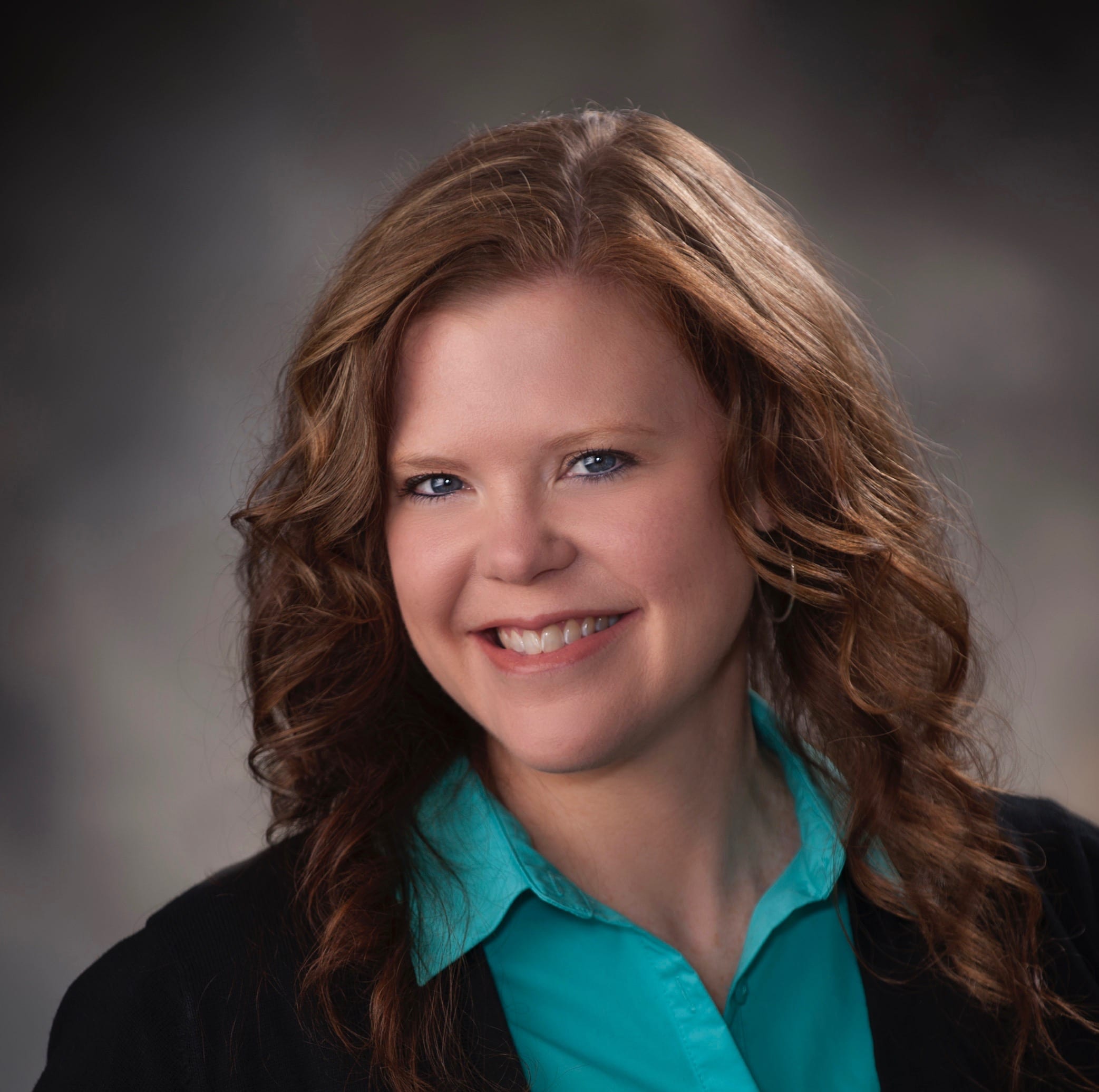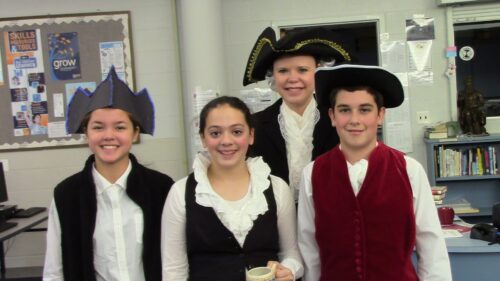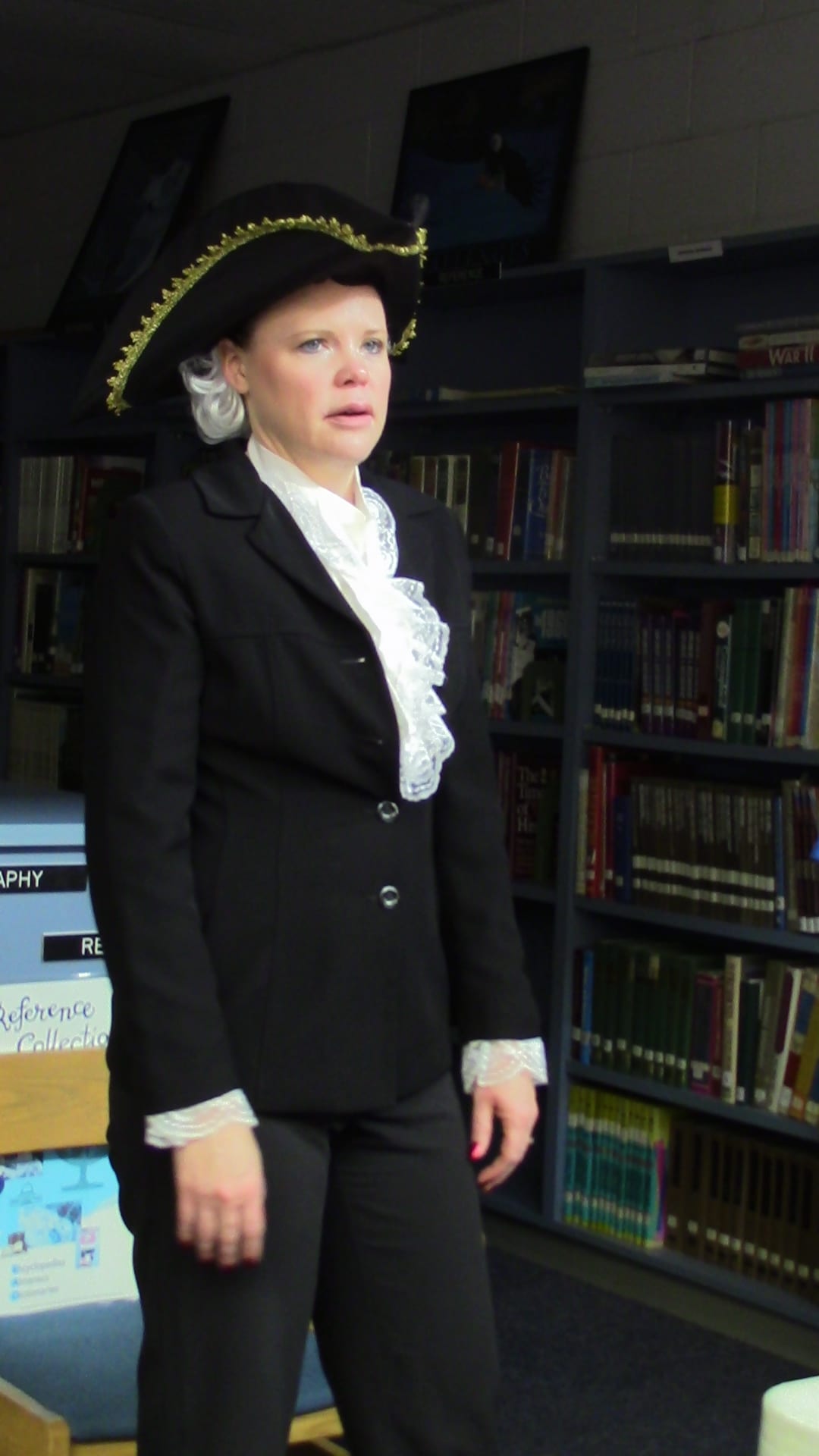Meet Our Teachers
Melanie Stuthard

Eighth Graders Reenact the Constitutional Convention, After Reading the Delegates’ Own Words
For twelve years, Melanie Stuthard had conducted a reenactment of the Constitutional Convention in her eighth-grade classroom every November. Students looked forward to the challenging exercise. After Stuthard entered TAH’s Masters program in American History and Government and read the primary documents of the founding, she brought those documents into the reenactment. Her students met the challenge.
Picture a school library in a middle school in a suburb of Akron. About 25 students sit at tables arranged in a large square. Many are wearing simple costumes to evoke the 18th Century. A slender thirteen-year-old wearing a starched white 18th century-style shirt stands and makes an argument against strong central government:
“Imagine our government as farmers and their crops. If there are ten farmers, and they [each] have a crop of 20 cabbages, they have the time, money, and energy to monitor their cabbages . . . . They will be able to water them and supply nutrients to them whenever necessary. But then another farmer comes along. . . . He takes power away from the ten farmers who originally owned the crops. So now, he is in charge of 200 cabbages. He does not have time, he does not have money to make sure those cabbages are thriving in their environment. Just like having strong central government won’t properly provide the resources and the money that [each state] needs.”
A student wearing a vest and cravat counters:
“A strong central government is necessary to defend our country from foreign attacks. Our current government is so weak that not even a fourth of the states can repay their debts or raise a militia. Our states are like sticks, with the central government being a band that holds them together. . . . When the band is tightened, and the sticks are closer together, it becomes harder to break them apart.”

These students are not reading from a script; they have invented arguments to explain the contrasting positions of two American Founders: the Antifederalist George Mason and the Federalist Alexander Hamilton. They were challenged to think this hard by their teacher Melanie Stuthard. A graduate of the degree program of Teaching American History, the Master of Arts in American History and Government, Stuthard was a highly effective teacher even before she began the program. The Gilder Lehrman Foundation named her Ohio Social Studies Teacher of the Year in 2014. Yet she says the MAHG degree “completely changed the way I teach.”
Reenacting the Constitutional Convention

Every fall, Stuthard leads all six of her eighth-grade classes at Revere Middle School in a Constitutional Convention. The exercise unrolls with remarkable fluidity. Each student is assigned the role of one of the actual delegates who met to deliberate on our form of government. Stuthard herself takes the moderating role of George Washington, reading at intervals from the only script her students have seen: a set of short statements setting the theme of each debate. Students then start the conversation on their own. Their first arguments are tentative. But soon they rise to the competitive challenge, excitedly countering each other’s points.
Stuthard gives students “very limited information about their delegates. They have to research and pull together many resources and make decisions about what they will say and when it is appropriate to speak.”
When Stuthard first devised the exercise, she asked students to read simple histories to learn about the delegates and their positions. Now they read the delegates’ own words.
Confidence with the Primary Documents Leads to Greater Expectations of Students
In 2015 Stuthard had completed about half of her MAHG course work. She felt comfortable enough with primary documents to introduce her students to James Madison’s Debates in the Federal Convention of 1787 . She asked students to comb through Madison’s daily record of the deliberations at the Convention to find the arguments their delegates made. “I also began requiring my higher-level students to read and quote from The Federalist or the Antifederalist papers, depending on their delegate’s leanings,” Stuthard said. (All these documents are available in an online exhibit on the Constitutional Convention created by Lloyd at the online library at TeachingAmericanHistory.org. Lloyd’s exhibit also offers information about the delegates, including biographical sketches linked to a list of their names).
Beginning the research, students were uncertain. They’d read and discussed an overview of the issues delegates debated at the convention: how, for example, large states and small states differed over the apportionment of representatives. But now they had to decipher statements on each issue made by the delegate they represented. When students grew confused by unfamiliar vocabulary or complex 18th century syntax, Stuthard asked them to consult each other. “My rule is ‘Ask three (fellow students), then me,’” Stuthard explained. She often suggested that struggling readers talk with the most capable readers of the class: those she’d given the roles of James Madison and Alexander Hamilton. Those students were working through key arguments Madison and Hamilton had penned for The Federalist. They could usually answer the classmate’s question.
The Effect of Collaboration
The “Ask three” rule made the research collaborative. When students discovered which of their classmates were working on similar positions, they began rehearsing their arguments together.
Just before the Convention began, students spent several days meeting in interest groups to strategize. Federalists met apart from Antifederalists; delegates of large states met apart from those of small states; Northerners with commercial interests met apart from Southern slave-holders. Since interests overlapped, students moved between groups, finding the alliance they needed for each of the Convention’s debates. Stuthard walked around the class, fielding last-minute questions.
All this preparation paid off when the convention began. Students had little trouble recognizing when to enter the debate. Soon, the debate over the apportionment of delegates to Congress grew lively, even heated.
Building Students’ Confidence
During a break on day three of the convention, students talked with pride about the project. “We each had to research our character. We read Madison’s Notes!” a student said. “That was really hard,” another said. “It isn’t written as it is in modern day.” Stuthard nodded. “I tell them that as a MAHG student, I had to decode the language just as they did.” MAHG students, like Stuthard’s eighth graders, work together to understand the primary documents. Stuthard recalls going into classes feeling she understood only 50% of the session’s reading, then finding understanding during the discussion of key passages.
After the 2015 convention, Stuthard said her students had “exceeded the level of debates I usually experience. At many points, they blew me away! Yet these students are not exceptional, compared to those I have every year. The richness of the debates was due to the resources I exposed them to,” Stuthard said.
In the years since, Stuthard has tweaked the project, but still refers students to Madison’s Notes and the Federalist–Antifederalist debate as they research. Looking for a delegate’s views on each issue can feel like “searching for a needle in a haystack,” she tells students. “‘But when you find the evidence, you will jump up and down!’ — And they do,” she laughs, describing students with eureka moments leaping from their seats.
An Understanding of the Constitution that Students Retain
Stuthard’s students say that the hard work to prepare is repaid by the fun of the convention itself. They also know they are learning concepts they won’t forget. “Just reading a textbook and taking a test” on the Founding, one student said, “I’d probably forget it in a week. But my sister, who is a junior in high school now, still remembers having this debate!”
Stuthard reinforces the lessons of the Convention by following it with a unit on current US government. Later in the year, Stuthard asks her students to play a game she calls “Constitutional Detective.” As they cover pre-Civil War history, they look for the passages of the Constitution that permit—or sometimes contradict—actions of governmental officials. They are astounded and indignant when President Andrew Jackson ignores a Supreme Court ruling forbidding Indian removal, for example.
“My MAHG studies completely changed the way I teach,” Stuthard says. “I often meet students I taught before I began MAHG, who thank me for what I taught them. I reply, ‘I wish you could be in my class now. I’m so much better!’”
